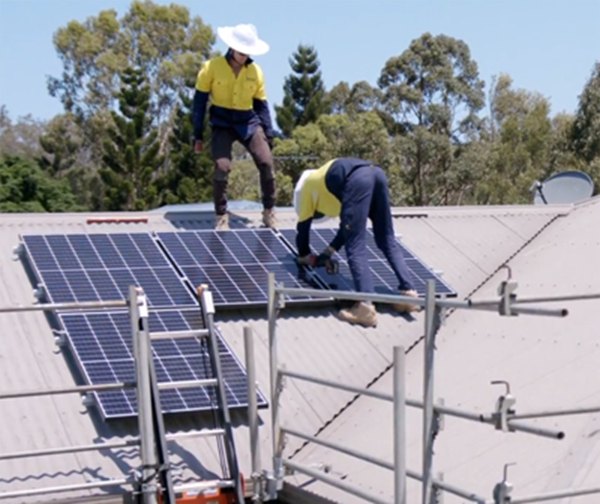Solar panel installations have become popular in SA with many dwellings having systems installed. However, there are significant fall risks to workers when installing these systems, such as:
- falling off the edge of a roof
- falling through a fragile roof – such as a skylight or veranda
- falling off a ladder.
Safe Work Australia's guide to managing the risks of rooftop solar installation work
Legal duties
The obligation of duty holders under the Work Health and Safety Act 2012 (SA) is to ensure the safety of workers and any other persons so far as is reasonably practicable.
Everyone in the workplace has work health and safety duties. Some have specific responsibilities for solar panel installations, including:
- designers
- manufacturers
- suppliers
- a business who engages solar panel contractors
- solar panel contractors
- principal contractors for construction projects where the cost of construction work is $450,000 or more
- workers.
Contract management
If a business engages a contractor, both parties have shared responsibilities and must work together to ensure the health and safety of workers and others.
Effective contract management is one of the key principles of the WHS legislation. When a contractor is directly engaged by a homeowner, the contractor has sole responsibility to ensure their workers are safe.
However, when a business engages a contractor they need to consult, co-operate and co-ordinate activities with the contractor on the hazards, risks and control measures associated with working at height when installing solar panels.
Each business retains their safety responsibility and must discharge their duty to the extent by which they have the capacity to influence and control the matter, disregarding any attempts to “contract out” their responsibilities.
Hierarchy of control
Businesses must implement 'reasonably practicable' control measures to manage the risks associated with falls from roofs. To minimise the risk of a fall:
- work from the ground or on a solid construction, wherever possible
- ensure the roof is dry and clean
- ensure workers have a safe means of access and egress to work areas
- use fall prevention devices such as temporary work platform, edge protection, guardrails or scaffolding, and ensure workers know how to use them
- only use a fall-restraint or fall-arrest system – harness, lifeline or industrial safety net when edge protection or work platforms are not reasonably practicable
- securely cover and mark, or edge protect, all open penetrations in the roof
- ensure ladders are placed at a ratio of 1:4 to the wall, secured at the top and bottom, and extended at least one metre above the roof edge. Always maintain three points of contact
- consider using an elevating work platform or scaffolding instead of a ladder
- ensure workers are adequately supervised.
Engineering Controls
Engineering controls such as guardrail systems have become more accessible in recent times and are reasonably practicable to use across the working face in many cases
There are numerous proprietary temporary edge protection systems available, that can be used for a wide range of roof types to control the risk of a fall.
Physical barriers such as guardrails or covers must also be used where reasonably practicable to prevent falls through fragile roof surfaces such as skylights and polycarbonate sheeting.
Harness-based restraint or fall arrest systems should only be considered if temporary edge protection is not reasonably practicable.

Safe Work Method Statements (SWMS)
There are a number of high risk construction work (HRCW) activities associated with solar panels installation that require a SWMS, such as work that involves:
- a risk of a person falling more than 3 metres
- working on or near energised electrical installations or services
- the disturbance of asbestos
For further information see: SWMS for high risk construction work.




